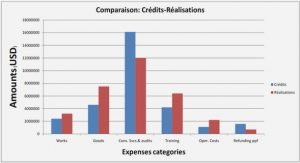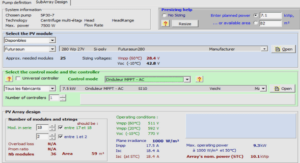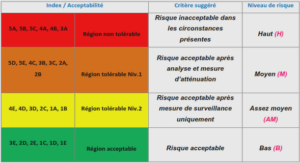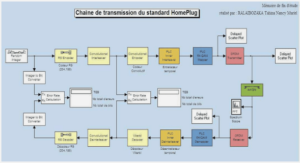Depth and degree of partial melting of Monteregian magmas
Geochemical and isotopic (Nd-Sr-Hf-Pb) evidence for lithospheric mantle source in the formation of the alkaline Monteregian Province (Québec)
Introduction
Magmas of continental igneous provinces range from large volume tholeiitic flood basalts such as the Deccan Province and Columbia River Basalts (e.g. Hawkesworth and Gallagher, 1993, and references therein) to smaller volume alkaline basalt/gabbro complexes such as the Okenyenya complex of Namibia (e.g. Milner and leRoex, 1996) and the Monteregian Igneous Province of south-eastern Quebec (Canada). The rocks of these provinces share similar geochemical features to those of Ocean Island Basalts (OIB), including evidence for an enriched mantle source. Thus, like OIB, magmas from many continental igneous provinces are believed to reflect mantle melts associated with a mantle plume. However, in many of these continental igneous provinces, the absence of a systematic age progression of magmatic activity and the lack of evidence for regional basement uplift argues against a mantle plume association (Furman and Graham, 1999; Furman, 2005; Lustrino and Wilson, 2007). Alternatively, the Cenozoic magmatic activity in the Mediterranean area has been ascribed to extensional tectonics through reactivation of ancient structural dislocations rather than advocating the passage of hot spots on continents (Lustrino and Wilson, 2007). Geochemical interpretations of the mantle origin of continental igneous provinces are clouded by possible interactions with other enriched reservoirs such as the subcontinental lithosphenc mantle and passage of the magmas through and emplacement within continental crust. Magmas from continental igneous provinces inherently show greater geochemical and isotopic variability than OIBs due to magma interaction with the asthenospheric mantle, Hthospheric mantle and continental crust (Lustrino and Wilson, 2007;
McKenzies and Onions, 1995; Saunders et al., 1992; Tang et al., 2006). Thus, the magmas may be products of asthenospheric or Hthospheric mantle sources or a mixture of both (Hawkesworth and Gallagher, 1993; Lustrino and Sharkov, 2006; Lustrino and Wilson, 2007; Milner and leRoex, 1996; Rogers et al., 2000; Shaw et al., 2003; Stein and Hofmann, 1992; Tang et al., 2006).
The Monteregian Igneous Province is composed of nine plutons and associated dykes of alkaline compositions that were emplaced in southern Québec, eastern Canada, by a continental magmatic event at ca. 124 Ma (Eby, 1984a; Foland et al., 1986). Like other Continental Igneous Provinces, the exact origin of these intrusions is controversial and has been ascribed to melting of the lithospheric mantle at the time of the opening of North Atlantic Ocean (Faure et al., 1996; Bédard, 1985; Wen et al., 1987) or a deep mantle (plume) origin (Eby, 1985; Foland et al., 1988). In fact, this igneous province has been linked to the alkaline intrusions of the New Hampshire White Mountains and the New England seamount chain as expressions of an age-progressive hotspot track: the New England hotspot, analogous with the Hawaiian model (Eby, 1985; Foland et al., 1988). However, eastward chronological progression of such a hotspot track is not completely supported by a regular progression in ages of the Monteregian Igneous Province (ca. 110 to 140 Ma; Eby, 1984a; Eby, 1985; Foland and Faul, 1977; Foland et al., 1986), White Mountains (110 to 130 and 165 to 200 Ma; Foland and Faul, 1977) and New England Seamounts (80 to 110 Ma; Duncan, 1982).
Geochemical and isotopic studies (Sr, Nd and Pb) of the Monteregian intrusions yield depleted isotopic signatures that have been variably ascribed as OIB and HIMU signatures consistent with a deep mantle (plume) origin (Eby, 1985; Foland et al., 1988) or an mantle source related to rifting and formation of the North Atlantic Ocean (Faure et al., 1996; McHone 1996). The uncertainty in the geochemical and isotopic interpretation of the mantle origin of these melts arises from influence of crustal assimilation observed in the intrusions on the basis of Sr, Nd and Pb isotope data (Chen et al, 1994; Eby, 1984b; Eby, 1985a; Eby, 1985b; Foland et al., 1988; Landoll and Foland, 1996). This crustal assimilation obscures the origin of the enriched nature of these intrusions. Overall, these geochemical and isotopic studies concentrated largely on Sr and Pb isotopes (Eby, 1984b; Eby, 1985a; Eby, 1985b; Foland et al., 1988) and provided only limited Nd isotope data for selected Monteregian hills.
In this paper, we present new geochemical and Nd, Sr, Hf and Pb isotope data for mafic rocks from eight of the Monteregian intrusions. These mafic samples were chosen in an effort to minimize the effects of crustal contamination and obtain a clearer signature of the mantle signature involved in the formation of the Monteregian Hills.
Geology
The Monteregian Igneous Province consists of a series of alkaline plutons and dikes emplaced along a linear east-west trend associated with the St. Lawrence graben and the Ottawa-Bonnechere paleorift (Fig.l). The magmas intruded three different terrains including the Precambrian Grenville basement west of Montréal, the St. Lawrence Lowlands sediments and the metamorphosed sequences of the Appalachian Mountains, east of Montréal. The igneous intrusions reveal a large variety of rocks from strongly silica-undersaturated to moderately silica-saturated. At the western end of the Monteregian Igneous Province, Oka complex is characterized by strongly silica-undersaturated rocks, represented by carbonatites, okaites and meltegites. The Central Monteregian Igneous Province intrusions (Mont Royal, St Bruno, St Hilaire, St Grégoire, Yamaska and Rougemont) are principally composed of slightly silica-undersaturated (essexite) to moderately silica-oversaturated rocks (gabbros and pyroxenite) with minor felsic rocks (syenite). The St Hilaire and St Grégoire intrusions contain a higher proportion of felsic rocks represented by nepheline syenites. The eastern part of the Monteregian Igneous Province (Mounts Shefford and Brome) is mainly characterized by silica-oversaturated rocks (pulaskite, syenite) and minor mafic rocks (gabbro and diorite).
The 140 Ma Mount Megantic intrusion has traditionally been considered part of the, Monteregian Igneous Province, but is also argued to belong to White Mountains alkaline series of New Hampshire because of its older age (200 to 165 and 110 to 130 Ma; Eby, 1985a; 1985b; Foland andFaul, 1977; Foland et al, 1988).
Mont Royal is mainly composed of gabbro and leucogabbro with a minor proportion of syenite and nepheline-diorite (Bancroft, 1923; Gelinas, 1972). The gabbro is composed of cumulus olivine (Fo74-68), Ti-augite and varying amounts of amphibole and plagioclase (An83-44). The St Bruno intrusion is primarily a gabbro body composed of olivine (Fo84-74), plagioclase (An84-55) and minor amounts of amphibole (Philpotts, 1976). A quartzgabbro body associated with the St Bruno pluton is considered a product of crustal contamination of the gabbroic magma (Eby, 1984b). Mount St Hilaire is composed of two principal rock-types that form two halves of the intrusion; gabbro and nepheline syenite.
Generally, the gabbros are pyroxene-rich but appear locally richer in amphibole and olivine is rare. Small bodies quartz syenite associated with the St Hilaire pluton are attributed to crustal contamination by the host rocks (Currie, 1983; 1986; Eby, 1988; Perrault, 1972). Mount Rougemont is essentially composed of pyroxenite and gabbro. Olivine can be abundant and plagioclase is present either as an interstitial phase in the pyroxenites or a major phase in the gabbros (Philpotts, 1972; Philpotts, 1976). Mount St Grégoire is a small circular intrusion with a core of essexite surrounded sequentially by rings of essexite, pulaskite and nepheline syenite (Eby, 1988; Philpotts, 1972 and authors therein). The essexite consists of minor olivine and a varying amount of augite, hornblende and oligoclase. The Yamaska pluton is mainly composed of pyroxenites (yamaskite) and gabbro (Gandhi, 1966). The gabbro is composed of abundant plagioclase, Ti-augite and/or hornblende. The pyroxenites and gabbros are intruded by essexite and nepheline-syenite. The essexite consists of Ti-augite, kaersutite and plagioclase, and interstitial alkali feldspar or nepheline. Mount Shefford is composed of diorite, gabbro and minor intrusive breccias, sub-volcanic porphyries, nordmarkite and pulaskite (Valiquette, 1977). Mount Brome, the largest intrusion of the Monteregian Province, is composed of a gabbro body partly enclosing a core of pulaskite and nordmarkite. Small bodies of nepheline-diorites, monzonites, and foyaites are found intruded into the core syenite units. The gabbro is composed of plagioclase, clinopyroxene, hornblende and rare olivine. Previous studies showed that crustal contamination played a major role in the evolution the Mount Shefford and Brome intrusions (Chen et al., 1994; Landoll and Foland, 1996).
Samples and analytical methods
Samples were selected on the basis of their chemistry and mineralogical features from a large set of rocks (140) collected from Mounts Royal, St Bruno, St Hilaire, St Grégoire, Rougemont, Yamaska, Shefford and Brome. The Mount Royal samples include rocks collected in 1930 during the construction of a railway tunnel through the mountain (provided by R. Martin, McGill University). An effort was made to concentrate on samples of mafic character in order to minimize contamination and differentiation effects. A total of 49
samples were analyzed for major and trace element compositions and 44 samples were analyzed for their isotopic compositions.
|
Table des matières
TABLE DES MATIERES
LISTE DES FIGURES
LISTE DES TABLEAUX
RÉSUMÉ
ABSTRACT
INTRODUCTION
Problématique
Rappel sommaire sur les systèmes isotopiques utilisés dans cette étude
Plan de thèse
Références
AVANT-PROPOS DU CHAPITRE 1
CHAPITRE 1
Tephro-chronostratigraphy of the lacustrine interglacial record of Piànico, Italian Southern Alps: identifying the volcanic sources using radiogenic isotopes and trace elements
1.1. Abstract
1.2. Introduction
1.3. The Piànico Formation: a brief stratigraphie guide and description of the tephra
1.4. Methods
1.5. Results
1.6. Discussion
1.6.1. Alteration of the Piànico tephra and their »datability »
1.6.2 Origin of t21d: anorogenic volcanism at the Brunhes-Matuyama reversal
1.6.3. Origin of t32: the northern Roman Magmatic Province
1.7. Conclusion
Acknowledgements
References
Tables
Figures
TRANSITION
CHAPITRE 2
Geochemical and isotopic (Nd-Sr-Hf-Pb) evidence for lithospheric mantle source in the formation of the alkaline Monteregian Province (Québec)
2.1. Abstract
2.2. Introduction
2.3. Geology
2.4. Samples and analytical methods
2.5. Results
2.5.1. Major oxides
2.5.2. Trace and rare earth elements
2.5.3. Nd, Sr, Pb and Hf isotopes
2.6. Discussion
2.6.1. Alteration effect
2.6.2. Fractional crystallization and accumulation
2.6.3. Crustal contamination by wall rocks
2.6.4. AFC Model
2.6.5. Evidence for an amphibole-bearing mantle source: Metasomatism event?
2.6.6. Depth and degree of partial melting of Monteregian magmas
2.6.7. Monteregian mantle source(s)
2.6.7.1. Isotopic signature of SCLM
2.6.7.2. Particular signature of Pb isotopes: Archean mantle or lower crust
2.7. Conclusions
Acknowledgements
References
Tables
Figures
AVANT-PROPOS DU CHAPITRE 3
CHAPITRE 3
Nitrogen, helium and argon isotopes in minerals from alkaline intrusions of the
Monteregian Hills, Québec: Evidence for an upper mantle origin
3.1. Abstract
3.2. Introduction
3.3. Geological setting
3.4. Samples and analytical methods
3.5. Results
3.6. Discussion
3.6.1. Elemental and isotopic fractionation: degassing or source effects?
3.6.2. N and Ar isotopic signatures of the Monteregian Hills
3.6.3. Correlation between nitrogen lead isotopes and trace elements: an upper mantle
signature
3.7. Conclusion
Acknowledgements
References
Tables
Figures
CONCLUSIONS
Références
![]() Télécharger le rapport complet
Télécharger le rapport complet






